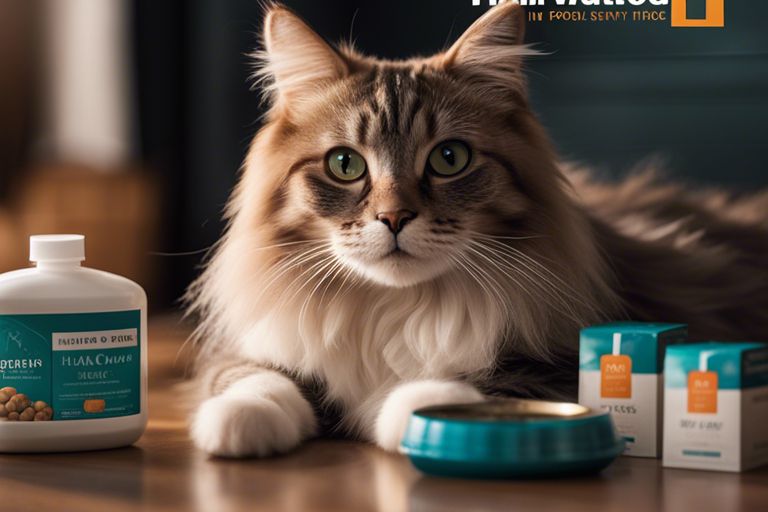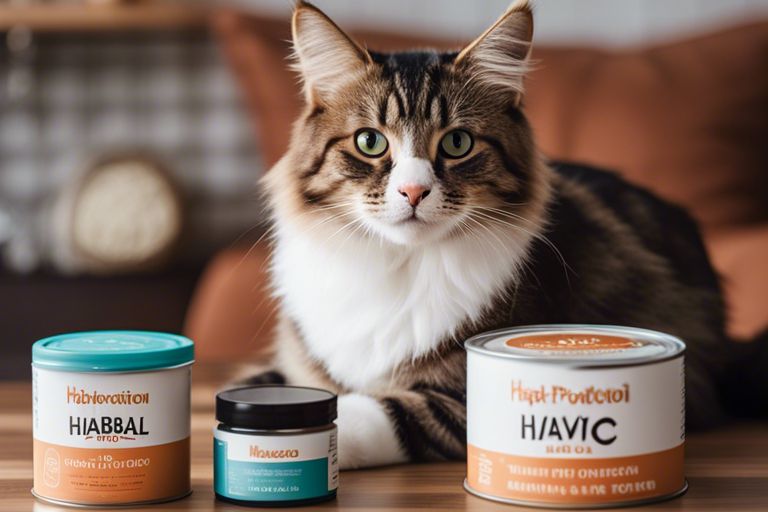Do you ever find unsightly, unpleasant hairballs around your home and worry about your feline friend’s health? Hairballs are a common issue in cats, but understanding the causes and knowing how to prevent them is essential for your cat’s well-being. Cats are meticulous groomers and often ingest loose hair while grooming themselves. The accumulation of hair in their digestive system can lead to the formation of hairballs, which can be dangerous if not properly managed. To prevent hairballs, it’s important to regularly groom your cat, provide a proper diet, and encourage hydration. Stay tuned for our helpful tips on how to keep your furry friend hairball-free.
Key Takeaways:
- Frequent grooming: Cats develop hairballs when they ingest loose fur while grooming. Regular brushing can help reduce the amount of hair they ingest, reducing the likelihood of hairball formation.
- Proper diet: Providing your cat with a high-fiber diet can help move hair through their digestive system, preventing the formation of hairballs.
- Hydration: Ensuring your cat drinks enough water can also help prevent hairballs by keeping their digestive system properly hydrated, aiding in the passage of hair through the system.
- Use of hairball remedies: There are various hairball remedies available, such as specially formulated cat foods or gels that can help prevent hairballs from forming and aid in their elimination.
- Regular vet visits: Regular veterinary check-ups can help monitor your cat’s overall health, including potential issues related to hairballs. Your vet can also provide additional tips and recommendations for preventing hairballs in your cat.
Understanding Hairballs
If you have a cat, you’ve probably encountered the unpleasant surprise of finding a hairball on your floor. While unsightly and messy, hairballs are a common occurrence in cats, and understanding their causes and how to prevent them is essential for keeping your feline friend healthy and comfortable. You can find great advice regarding this topic in What to Do About Hairballs in Cats.
Definition and Composition of Hairballs
A hairball, also known as a trichobezoar, is a wad of fur that forms in your cat’s stomach when they groom themselves and swallow loose hair. This hair can’t be digested, so it often accumulates in the stomach and forms a ball. The hairball may also contain other indigestible materials, such as food or debris, leading to its characteristic appearance.
The Biology of Hairball Formation
The formation of hairballs is a natural consequence of your cat’s grooming habits. When your cat licks their fur, they swallow loose hairs, which accumulate in the stomach over time. The hair is typically moved through the digestive system and eliminated in the feces, but occasionally, the hairball may become too large to pass through the intestines. This can lead to gastrointestinal blockages and other health issues if not addressed.
Causes of Hairball Formation
Assuming you have a cat, you may be wondering what causes hairballs to form. There are several factors that contribute to the formation of hairballs in cats, and understanding these causes can help you take steps to prevent them.
Grooming Habits and Hair Types
When it comes to hairball formation, your cat’s grooming habits and the type of hair they have play a significant role. Cats with longer hair, such as Persians or Maine Coons, are more prone to hairballs because they tend to ingest more fur while grooming. Another factor to consider is the frequency of grooming – cats that groom themselves excessively are more likely to accumulate hair in their stomachs.
| Factors | Effects |
| Grooming habits | Ingestion of more fur |
| Hair type | Predisposition for hairball formation |
| Grooming frequency | Increased hair ingestion |
| Amount of fur ingested | Accumulation in the stomach |
| Perceiving signs of excessive grooming | Recognizing risk for hairball formation |
Dietary Factors and Lifestyle
Another important factor in hairball formation is your cat’s diet and overall lifestyle. A diet lacking in fiber can lead to poor digestion, making it difficult for your cat to pass hair through their system. Additionally, if your cat has a sedentary lifestyle, they may not be as active in grooming, which can also contribute to hairball formation. After all, it’s essential to ensure your cat’s diet is well-balanced and that they are getting enough exercise and stimulation to prevent hair accumulation.
| Factors | Effects |
| Diet lacking in fiber | Poor digestion and hairball formation |
| Lack of exercise | Decreased grooming and hair ingestion |
| Excessive grooming due to lack of stimulation | Increased hair ingestion |
| After all, a balanced diet and active lifestyle are crucial for preventing hairball formation | Preventing hair accumulation and digestive issues |
Prevention and Management
To prevent hairballs in your cat, you can take a few proactive steps to reduce hairball formation and help your cat manage them more easily.
Grooming Techniques to Reduce Hairball Formation
To help reduce the amount of hair your cat ingests, you should groom your cat frequently. Brushing your cat daily will remove loose and shedding hair before it can be ingested, which can significantly reduce the amount of hair your cat ingests. Not only will regular grooming reduce the occurrence of hairballs, but it can also help keep your cat’s coat healthy and reduce shedding around your home. Additionally, keeping your cat’s coat clean and free of tangles will make grooming more comfortable for your feline friend, which is beneficial for both you and your cat.
Dietary Adjustments and Supplements
Another way to prevent hairballs in your cat is to make dietary adjustments and offer supplements. A cat’s diet can play a crucial role in managing and preventing hairballs. Providing your cat with a high-fiber cat food can help move hair through the digestive system, reducing the likelihood of hairball formation. Additionally, there are a variety of hairball control supplements available, including flavored gels and treats, which can help prevent the formation of hairballs in your cat’s digestive tract. It’s important to consult your veterinarian before making any significant changes to your cat’s diet or adding supplements to their routine to ensure their health and safety.

Conclusion
From above, it is clear that hairballs in cats are caused by the grooming habits of your feline friends. The best ways to prevent hairballs include regular brushing of your cat’s coat to reduce the amount of loose hair they ingest, feeding them a high-quality diet with proper nutrients, and providing them with ample opportunities for play and exercise. Additionally, incorporating a hairball prevention supplement or treat into your cat’s daily routine can also effectively reduce the occurrence of hairballs. By being proactive and implementing these preventative measures, you can help ensure your cat’s overall health and well-being while minimizing the discomfort and inconvenience associated with hairballs.
FAQ
Q: What causes hairballs in cats?
A: Hairballs in cats are caused by the ingestion of fur during grooming. Cats have tiny hook-like structures on their tongues that help them remove loose fur while grooming. This fur is then swallowed and can accumulate in the stomach, forming a hairball.
Q: How can I prevent hairballs in my cat?
A: There are several ways to help prevent hairballs in cats. Regular grooming with a brush or comb can help remove loose fur before it is ingested during grooming. Providing a high-fiber diet or hairball control cat food can also help move fur through the digestive system. Additionally, adding a hairball prevention treat or supplement to your cat’s diet can aid in reducing the frequency of hairballs.
Q: When should I be concerned about my cat’s hairballs?
A: Occasional hairballs are common in cats and are usually not a cause for concern. However, if your cat is experiencing frequent or persistent hairballs, it may be a sign of an underlying issue such as excessive grooming due to stress or skin conditions. If you notice your cat is unable to pass a hairball, has difficulty breathing, or is vomiting frequently, it is important to consult with your veterinarian as it could indicate a more serious problem.

Jayley, a devoted cat enthusiast, also writer for other cat blog as well. She aims to dedicated to providing comprehensive information, insights, and advice on everything you’d ever want to know about our whiskered companions.
